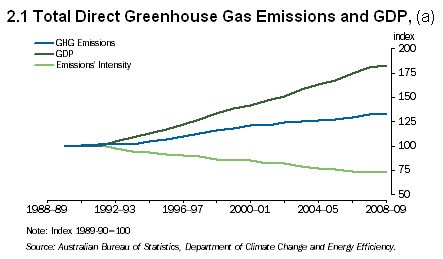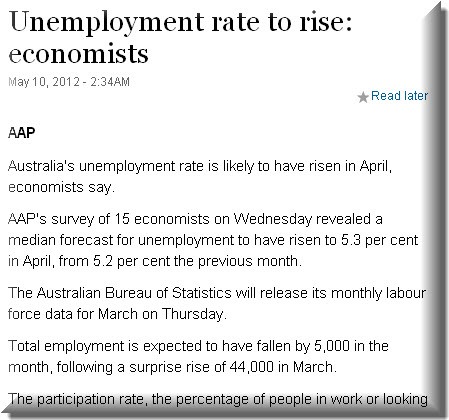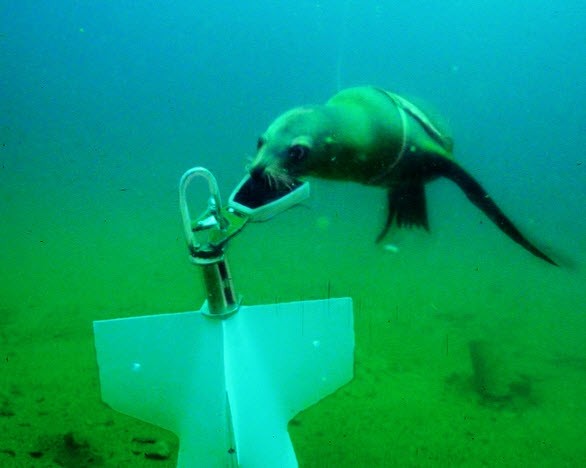Accounting for the environment. The Australian Bureau of Statistics this morning released a major new addition to its statistical portfolio with the first issue of “Completing the Picture — Environmental Accounting in Practice, May 2012“.
The document is designed to inform government decision-makers, policy analysts, scientists, industry and other groups on how environmental accounts could be used and further developed in Australia.
Its development followed the adoption by the United Nations Statistical Commission at its 43rd meeting, held 28 February to 2 March 2012, of the System of Environmental-Economic Accounting (SEEA)as an international statistical standard. The ABS explains in an introduction:
As an international statistical standard the SEEA now has the same status as the System of National Accounts (SNA), from which key economic indicators such as GDP (gross domestic product) emerge. The adoption of the SEEA by the United Nation’s peak statistical body is a significant milestone in the on-going development of information to support the needs of government, industry and the general public in the area of environmental policy. …
The development of the SEEA has been driven by a desire to have more complete and robust information on the economy and the environment and to better understand the interactions between the two. This has been due to increasing realisation that economic prosperity is dependent on the ability of the environment to supply natural resources and to absorb pollution, and that environmental policies impact on economic activity. In the report “Beyond GDP” the Stiglitz Commission noted:
‘What we measure affects what we do; and if our measurements are flawed, decisions may be distorted. Choices between promoting GDP and protecting the environment may be false choices once environmental degradation is appropriately included in our measurement of economic performance. So too, we often draw inferences about what are good policies by looking at what policies have promoted economic growth; but if our metrics of performance are flawed, so too may be the inferences that we draw.’
The SEEA is a measurement framework that can provide a range of metrics that link information on the economy and the environment. This integration of information is achieved by the use of common frameworks, classifications and standards, providing an integrated database for policy analysis and decision making.
Among the many studies in this first issue is an ABS review of greenhouse gas emissions which shows that total emissions of GHG, excluding changes due to land use and land use change and forestry (LULUCF), have increased by 33% between 1989-90 and 2008-09.
During the same period, economic activity as measured by gross domestic product (GDP) increased by 83%. The phenomenon, where the economy grows at a rate faster than the related pollution or resource use (e.g. water or energy) is known as decoupling. This can be caused by either a structural change in the economy (for instance, that the service industries have grown more strongly than higher emitting industries) or by the adoption of technological innovations by businesses and/or a combination of both. Overseas this type of analysis has been undertaken, for example by the statistical office of the Netherlands.
In the case of Australia, the decoupling is relative, as greenhouse gas emissions are increasing but at a lower rate than economic activity (as measured by GDP). Absolute decoupling would require greenhouse gas emissions to be stable or to decrease while economic activity increases.

Putting faith in forecasts. The collective wisdom of economists:

The official result:

We see what we want to see. Have a close look at the little chart below because it tells us a lot about how people view politics.

As a blogger at NPR explains:
When pollsters ask Republicans and Democrats whether the president can do anything about high gas prices, the answers reflect the usual partisan divisions in the country. About two-thirds of Republicans say the president can do something about high gas prices, and about two-thirds of Democrats say he can’t.
But six years ago, with a Republican president in the White House, the numbers were reversed: Three-fourths of Democrats said President Bush could do something about high gas prices, while the majority of Republicans said gas prices were clearly outside the president’s control.
Clear evidence that people choose political loyalty over facts.
A quote of the day
“A number of the teenagers I interviewed did express their fascination with the fact that vampires that are traditionally portrayed as evil often come across as heroic characters in current TV shows.”
— Danish researcher Line Nybro Petersen on getting a taste for spirituality from vampires
Some news and views noted along the way.
- Colour coding government – Health is green, Justice black.
- Lunchtime dancing for productivity.
- Promising too high a reward bonus can make performance suffer.
- How to train your sea lion.

IN TRAINING During an exercise, a Navy sea lion attaches a recovery line to a target on the seafloor.







Crikey is committed to hosting lively discussions. Help us keep the conversation useful, interesting and welcoming. We aim to publish comments quickly in the interest of promoting robust conversation, but we’re a small team and we deploy filters to protect against legal risk. Occasionally your comment may be held up while we review, but we’re working as fast as we can to keep the conversation rolling.
The Crikey comment section is members-only content. Please subscribe to leave a comment.
The Crikey comment section is members-only content. Please login to leave a comment.